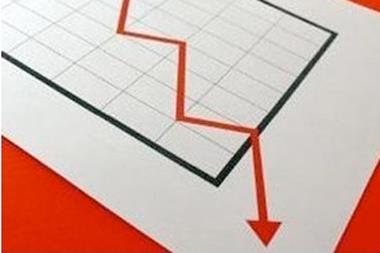Insurer achieved average commercial rate rises of 5.5% and expects £3m St Jude hit
The level of price competition in the commercial insurance market suggests some companies are still willing to accept commercial combined operating ratios (CORs) of above 100%, according to Allianz UK chief executive Jon Dye.
Speaking to journalists following the release of Allianz UK’s nine-month 2012 results this morning, Dye said: “It is difficult to understand how businesses would want to continue to trade their commercial portfolios at combined ratios north of 100% but one would conclude, if you look at the current appetite in the market, some people are prepared to do that.”
Dye said that despite positive signs of commercial rate hardening in the first half of the year, appetite to raise rates had levelled off in the third quarter, partly because benign weather had flattered property results, reducing impetus to drive up rates elsewhere.
He contended that commercial casualty rates still require 10% increases. He added: “The performance of much of the market in commercial property doesn’t look terribly special either.”
Allianz raised commercial rates on average by 5.5% in the first nine months of 2013. Dye described this as “Not brilliant but adequate”.
He said that the commercial motor rates were slightly higher than the average figure, but property and commercial package rates were “significantly lower than that”. Commercial casualty rates had increased almost 10%, but Dye stressed that the company needed to maintain this level of increase.
“We are having to work very hard to take rate at that sort of level, which suggests other people are not pushing as hard. And the issues we can see in our casualty account will be visited upon everybody else. There’s nothing unique about our position in the casualty market.”
Personal motor mayhem
One particular area of concern for insurance chief executives is the rapid decline of motor rates, which industry surveys have shown are down by between 12% and 14% on where they were at this time last year.
Dye said that Allianz had cut its personal motor rates “a fraction of a percentage point”. He added that low rates had prompted Allianz to walk away from some brokered motor business, which is why that line of business is growing slower than originally planned.
He said: “From our point of view private car has got too cheap too quickly and we have been prepared to let volume go. We are not going to chase the market down when it is taking what looks to us to be overly aggressive rate cuts.”
He added that it was unclear who was behind the sharp rate cuts, as many chief executives have reported that their rate cuts are well below those quoted by the pricing surveys.
Dye said: “Some of it can be driven by the behaviour of the brokers themselves. If we have given a net-rated product and they choose to take no commission or push their commission into negative territory they can do that. I’m not sure it is the brokers at this moment in time. I suspect it is some of the elements in the direct market who are pushing it that way.”
St Jude loss
One feature of companies’ full-year results will be losses from the St Jude storm, which hit in late October and so fell into the fourth quarter.
Dye said Allianz is expecting a maximum claims bill from St Jude of £3m, which he described as “inconvenient but not material in financial terms”.
He said: “Before the event it looked like that was going to be pretty horrible but actually it has turned out to be not such a big deal at all.”

































No comments yet